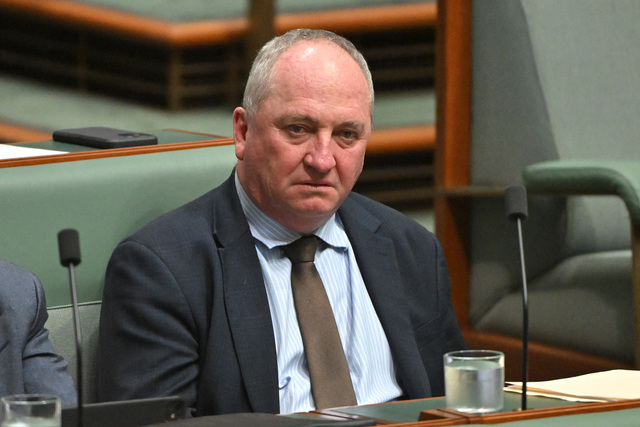In the lead-up to the last election, Anthony Albanese repeatedly labelled the former Coalition Government as ‘all promise and no delivery’ and argued that things would be different under a Labor Government. He subsequently said his government would build back stronger post-Covid and pursue reform in the same fashion as Hawke and Keating.
Well, it’s not happening. While the Albanese government has been ticking off various promises (Robodebt enquiry, Murray-Basin Plan, changes to stage three tax cuts etc.), three critically-important policy issues are simply not being addressed, and the electorate is awake up. The issues are energy, housing and taxation.
Taxation reform is critical in its own right, but it would also change the economic settings to address the housing and energy market imbalances.
But reform is being thwarted by the inability and/or unwillingness of the federal bureaucracy to embrace the notion, and to lay the groundwork for reform agendas. It wasn’t always like this. I go back far enough to have been in the midst of the reform agendas of Whitlam, Hawke, Keating (and indeed Fraser) and the nurturing of the conditions that made the reforms possible.
The first condition was the hiring of proactive bureaucrats. The Whitlam days saw a phalanx of bright people drawn to the federal bureaucracy – John Menadue, Anne Summers, Max Moore-Wilton etc. The Trade Department was a particular hot spot. I remember as a junior staffer in the new spin-off Industry Department watching the senior staff in Industry and Trade ganging up on their Treasury counterparts at inter-departmental committee (IDC) meetings. Abusive phone calls would often follow.
These days the relationships between departments are much more civil. Part of the reason is that the top brass in most departments have their grounding in Treasury/Finance or Prime Minister & Cabinet – a deliberate ploy to keep the spending departments in check.
The second condition that facilitated reform agendas of the past was the leadership role of the senior staff referred to above. What they agreed at those IDCs went to respective Ministers for the ensuing Cabinet discussion.
However now there is an extra layer of advice – some 2,000 advisers in the ministers’ offices. They’ve got strong political instincts, but not necessarily the skillsets to assess options and arrive at workable solutions.
The rise of the ministerial staffers has seen a decline in the relevance and leadership of the federal bureaucracy. Plenty of evidence to support this. Only last month I listened to a very senior bureaucrat give a speech at a function where he basically trotted out the government’s recent achievements – but very little about challenges, issues, ideas or action plans to address them.
The third condition that facilitated reform agendas in the past was the experience and integrity of departmental staff – being able to see through lobbyists’ spin and develop policies free of external influence. The reality now is that the important areas of the system are significantly compromised, with defence and energy policy as prime examples.
Housing reform
Former Treasury head Ken Henry has been a regular champion for tax reform since his seminal report 15 years ago. And he says our youth are now suffering the consequences as house prices and rentals soar. Henry says policymakers have allowed intergenerational unfairness to become embedded in the system, and his views are echoed by Ross Garnaut, one of our most respected economists.
But their views are basically ignored by the Canberra machinery. Reform of the housing industry requires a massive reform of policies and practices across the board.
Adding to the problem is the junior status of the federal housing minister, Julie Collins. She is not even in Cabinet and her bureaucrats are buried away in the Department of Social Security. Go figure.
Solutions?
One: Elevate the Housing Minister to Cabinet, and move her bureaucrats into the economic mainstream.
Two: Cut ministerial staff levels by a significant amount – and send strong signals to lobbyists, businesses, local government and others to deal with departments and not ministerial advisers.
Three: Impress on the coalition parties that the careers of senior bureaucrats depend on them being apolitical – hence there is no need to stack the system with ministerial advisers.
Speeding trucks
In the May column, I said I’d follow up with the feds on truck drivers’ lunatic behavior, including the flouting the 100km/hour truck speed limits.
The head of the Office of Road Safety (federal Department of Infrastructure) agreed with my observations, citing her own experiences of bad truckie behaviour between Canberra and Melbourne. She advised that the Monash University Accident Research Centre is currently undertaking a study of the issue, for subsequent attention by federal/state authorities.
I’ve also met with the CEO of a sizeable interstate trucking business located in Canberra. He is red hot on speeding trucks. He explained that while speed limiters are mandatory on large trucks, they are easily disabled by the driver (this must surely be addressed!). But he also complained about the lack of flexibility in the truck log system, quoting an example where a two-three hour loading delay at the pick-up point plays havoc with schedules and allowable driving times. He is adamant that improved log systems must be part of the solution.
I’m going to keep on about this, because the safety of the regional population, as well as tourists, is seriously at stake here.








